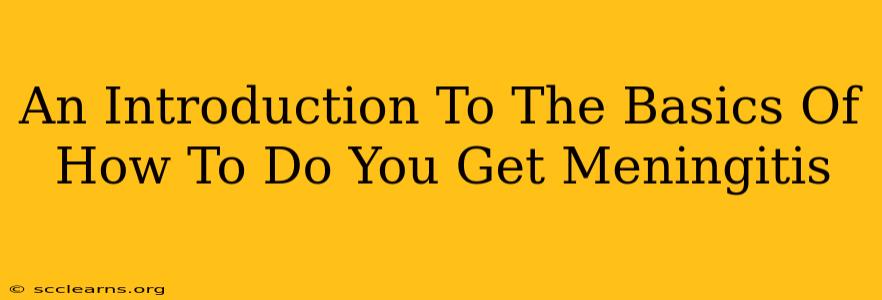Meningitis, a dreaded inflammation of the protective membranes surrounding your brain and spinal cord, is a serious illness requiring immediate medical attention. Understanding how it spreads is crucial for prevention. This post will delve into the basics of meningitis transmission, dispelling common myths and empowering you with crucial knowledge.
Understanding the Causes of Meningitis
Meningitis isn't caused by a single entity; rather, several different infectious agents can trigger this severe inflammation. These fall broadly into two categories:
1. Viral Meningitis: The Most Common Culprit
Viral meningitis is the most frequent type. It's usually less severe than bacterial meningitis and often resolves on its own without specific treatment. Several viruses can cause it, including:
- Enteroviruses: These are common viruses often spread through the fecal-oral route (think contaminated food or water).
- Influenza viruses: The viruses that cause the flu can sometimes lead to meningitis.
- Herpes simplex viruses: While usually associated with oral or genital herpes, these viruses can also, in rare cases, cause meningitis.
- Mumps virus: The mumps virus, preventable through vaccination, can also cause meningitis.
How is viral meningitis spread? The transmission routes vary depending on the specific virus. However, many are spread through respiratory droplets (coughing or sneezing), close contact with an infected individual, or through contact with contaminated feces.
2. Bacterial Meningitis: A More Serious Threat
Bacterial meningitis is far more serious and potentially life-threatening. It requires prompt medical intervention with antibiotics. Several bacteria can cause it, including:
- Streptococcus pneumoniae: A common bacterium found in the nose and throat.
- Neisseria meningitidis (meningococcal meningitis): This highly contagious bacterium is a significant public health concern.
- Haemophilus influenzae type b (Hib): Thanks to widespread vaccination, Hib meningitis is now much rarer.
- Listeria monocytogenes: This bacterium is often found in contaminated food.
How is bacterial meningitis spread? Transmission routes differ based on the bacteria. Meningococcal meningitis, for example, spreads through respiratory droplets produced during close contact, such as coughing or kissing. Listeria meningitis, on the other hand, is typically foodborne.
3. Other Causes: Fungal and Parasitic Meningitis
While less common, fungal and parasitic meningitis can also occur. These types are often associated with weakened immune systems or specific geographical locations. Transmission routes are highly variable and often involve environmental factors or exposure to specific organisms.
Key Takeaway: Prevention is Paramount
Understanding how meningitis spreads is crucial for effective prevention. While not all types are preventable, practicing good hygiene, maintaining a healthy lifestyle, and getting recommended vaccinations significantly reduce your risk.
- Vaccination: Vaccines exist for several types of bacterial meningitis (like meningococcal and Hib).
- Hygiene: Frequent handwashing, covering coughs and sneezes, and avoiding close contact with those who are ill are vital.
- Safe Food Handling: Proper food handling and preparation helps prevent foodborne meningitis.
If you suspect you or someone you know has meningitis, seek immediate medical attention. Early diagnosis and treatment are essential for the best possible outcome. This information is for educational purposes only and should not be considered medical advice. Always consult a healthcare professional for any health concerns.

